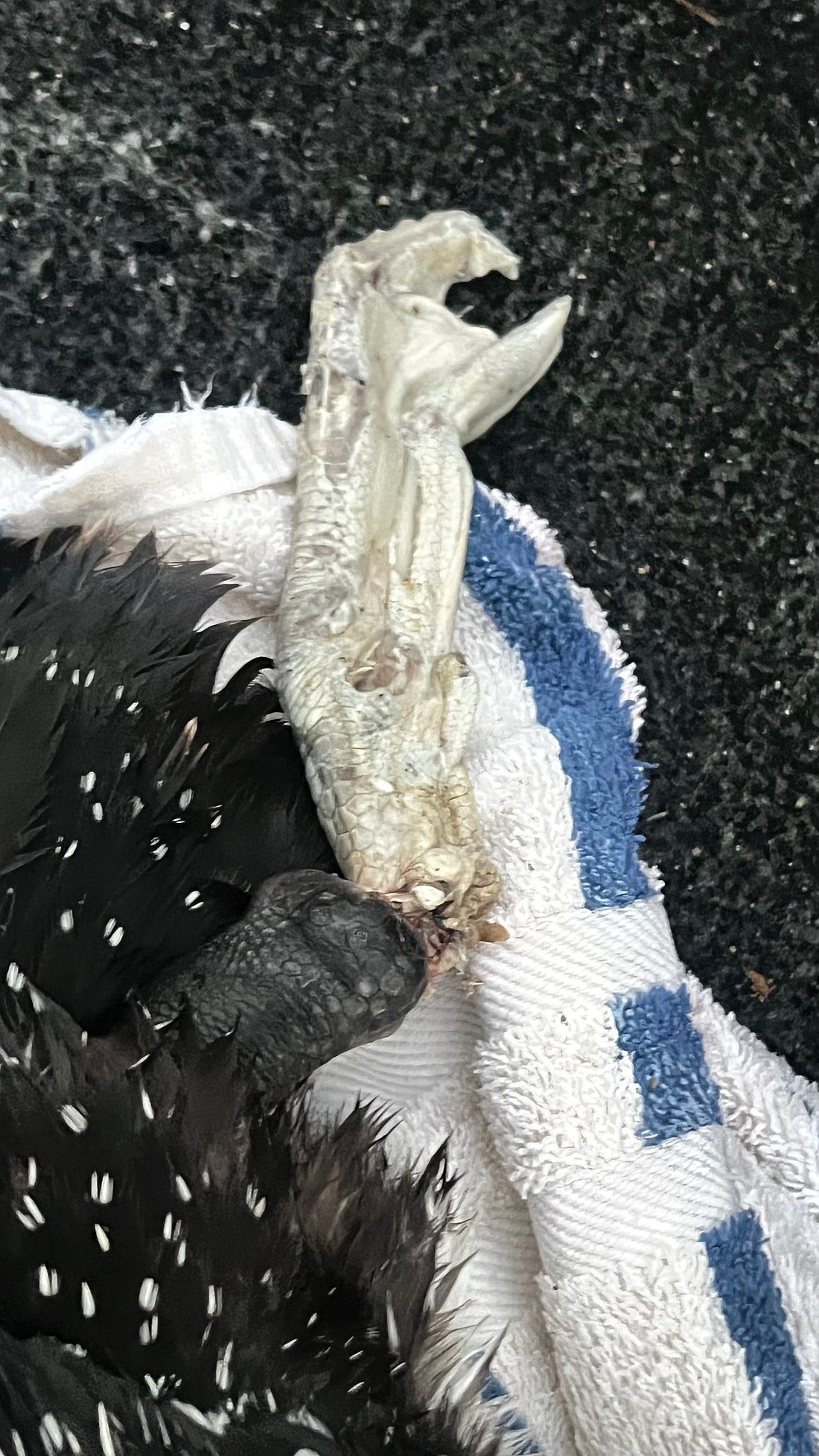September 2, 2025 at 9:33 a.m.
Fall fishing season is here, bringing anglers back to the lakes for walleye, perch, and northern. Cool weather and colorful fall trees make it a great time to be outdoors and on the lake. But we must continue to adhere to the Loon Safe Boating and Fishing guidelines. Until the final juvenile loon has begun its migration south—where it will remain for the next three to four years—it is important for everyone to remain mindful of loon safety. Fall fishing is the time of the season when juvenile loons begin fishing independently and are at risk of getting hooked. They may approach fishing boats, and strike at tackle or a hooked fish.

Minnesota Loon Rescue has dealt with over 70 calls so far this year with many loons harmed by fishing gear and lead poisoning. On Crystal Lake near Hackensack, Minnesota, a loon family with two self-sufficient chicks faced a crisis when one adult became entangled in fishing line and a lure. It lost the use of its leg when the fishing line cut off blood to the leg. Despite having one functional leg and appearing otherwise healthy, the adult remained with the chicks, who are growing and developing their ability to fly. Unable to fly to migrate south, this injured loon will be captured before winter and transported to Wild and Free for euthanasia. Another adult loon was rescued with fishing line around its beak but didn’t make it. The fishing line was tangled around his tongue so badly its tongue fell off at the rehabilitation center.
It is important to remain vigilant for juvenile loons from now until mid-November, until the ice forms and last loons have left. If you are fishing and notice a loon entering your area, please reel in your line. This practice minimizes the risk of accidentally catching a loon, as these juveniles may be attracted to your bait as an easy food source. Please follow the loon fishing rules. A hooked loon is almost always a dead loon! Please fish loon-safe to protect our loons from injury and death.
• Never cast towards a loon on a natural nest or artificial nesting platform.
• Keep at least 200 feet from any loon pair and their chicks.
• Do not cast or fish near loons that seem interested in your bait.
• Pull in your lines temporarily until the loons leave or move to a different fishing spot.
• Do not discard broken fishing lines in the water or on shore.
• Fish with lead-free tackle. Loons die within 2-3 weeks of swallowing a lead sinker or jig.
Accidents happen. Call or text Minnesota Loon Rescue, 855-552-1500 (a new number), if you are unable to safely land and unhook the loon, and the line breaks or is cut. We have trained volunteers ready to help! Report the name of the lake, location on the lake, and date and time the loon was hooked or spotted. If the loon is banded with colorful leg bands, please report the colors. Text photos and videos of the loon.
Do you want to help by volunteering for Minnesota Loon Rescue? Volunteers are needed to assist with the rescue of loons in distress and to transport them to the rehabilitation center. If you are interested, please visit our website at mnloonrescue.org and email [email protected]
Additional resources: WI Loon Rescue Inc: 715 966-5415 or Wildlife Rehabilitation and Release: 612 822-7058
WEATHER SPONSORED BY
Latest News
Events
November
To Submit an Event Sign in first
Today's Events
No calendar events have been scheduled for today.


Comments:
You must login to comment.